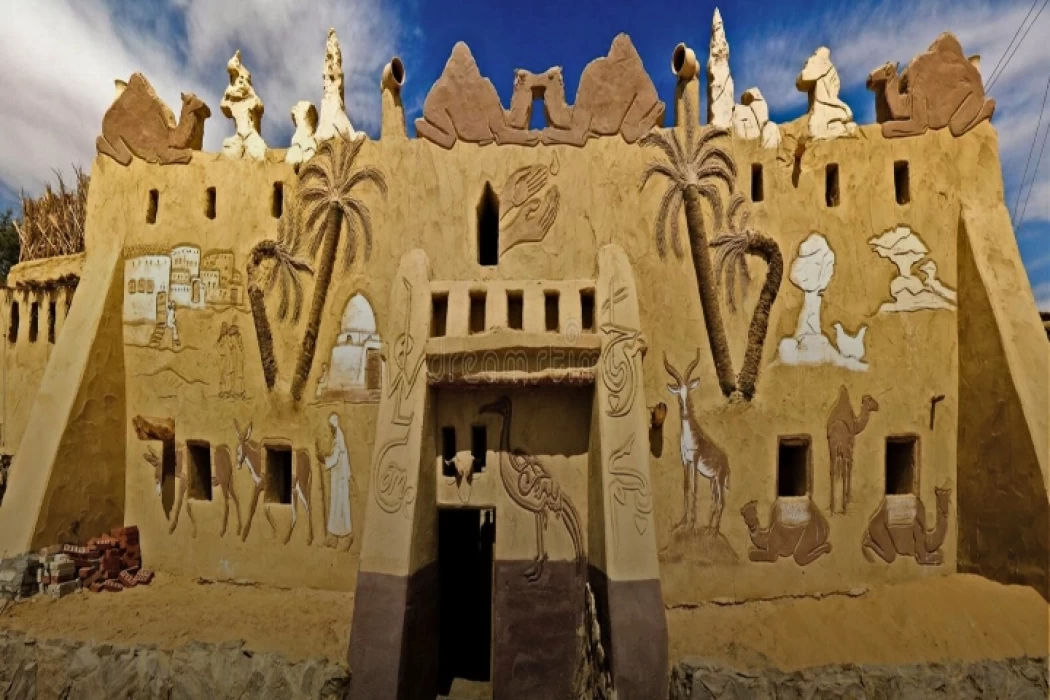
Badr Museum in Farafra
The Badr Museum in Farafra Oasis is unique in terms of the environmental materials for which its drawings are famous. These drawings express nature and the actual reality of everyday life.
The artist Badr Abdul Ghani decided to build his museum and build it at his own expense, to embody and preserve the environment and heritage of the original Farafra, which is about to disappear, and the extent of his love and connection with his native land "Farafra", although he lived for a while in Italy, he still dreamed of having his museum in his hometown of Farafra.
Abdul Ghani chose a site he owns in the land of Farafra, to set up a special museum on it, embodying the original environment of the Oasis, and chose that his drawings and sculptures should be made of environmental materials, he uses only the colored sand of the "White Desert" located in the OASIS to be the basis for his drawings, while his sculptures are from palm trunks that are characteristic of any oasis in Egypt besides the use of silt.
Badr added that the museum embodies a picture of the old Farafra Palace, which the people of the Oasis are currently trying to preserve what is left of it, and when the visitor enters the museum, he sees the embodiment of several characters in silt, playing "Sija" – one of the famous rural games – and in the painting itself, one of the men lying on a "bench" and another drinking the popular "nut", and as soon as you turn around you find this embodiment in a photograph, the embodiment of the last generation of the original people of the OASIS who were sticking to their customs and traditions.
Badr said that he wanted to preserve the original traditions and legacies of the ancient people of Farafra, where they gathered every day to play and have fun in front of the old Oasis houses," Badr said.
He continued that he collected some sculptures from palm trunks that embody sorrows and howls during funerals, and called it the Chamber of Sorrows, the only chamber he described as the most beloved and closest to his heart.
It is noteworthy that the Badr environmental museum embodies all the Customs and legacies of the people of ancient Farafra, and the museum receives many visits from various nationalities around the world














